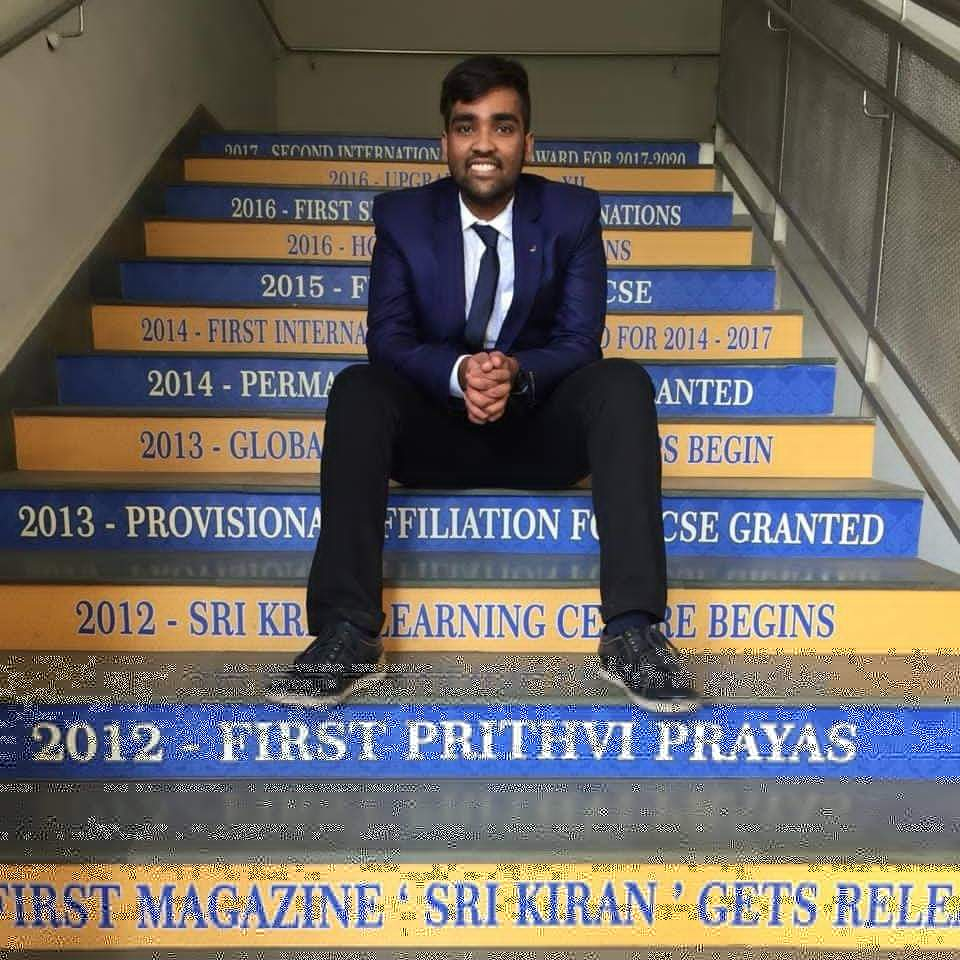How the Tigers paced their steps to hunt down the Shaheens and end 53 years of hurt

Bangladesh scripted cricketing history of the highest order by whitewashing Pakistan 2-0 in their rivals’ own backyard. For all the off-field weight the victory carries, it also marks a watershed moment in Bangladesh cricket as the crowning moment of a long-brewing pace revolution.
On October 16, 1952, Pakistan took to the field for their first-ever Test outing – against India in Delhi. On March 26, 1971, Bangladesh confirmed their status as a sovereign nation. In the 19 years that separated these two historic occasions, one player from erstwhile East Pakistan managed to make it to the Test arena, as a XIIth player for Pakistan – Raqibul Hasan would be named Bangladesh captain in their first-ever ICC tournament for having achieved this unprecedented feat.
53 years later, the same Bangladesh have whitewashed their former parent state, that too on their own turf. Entrenched in its imperial roots, this great sport is all too familiar with stories of spirited colonies standing tall over the all-conquering empire. Yet, few triumphs have come in such a symbolic fashion and at such an important juncture of the country’s history. While one revolution brewed on the streets of Bangladesh, another long-ongoing pace revolution in the fields of Bangladesh culminated in a crowning moment in Rawalpindi.
The current Bangladesh international setup is teeming with pacers featuring a brilliant mix of experience and youth. The veteran quartet comprises Taskin Ahmed, Mustafizur Rahman, Khaled Ahmed, and Ebadot Hossain, all of whom have over 10 Test caps and have been a part of the international circuit for at least five years, Meanwhile, the young quartet of Tanzim Hasan Sakib, Hasan Mahmud, Nahid Rana, and Shoriful Islam are all under 25 years of age and have already produced game-changing performances for Bangladesh. Add to that future hopefuls in Mushfik Hasan and Rejaur Rahman Raja, and the Tigers boast the potential to field a variety of attacks replete with diverse attributes depending on the conditions and opposition.
I am really in awe of how they have progressed and accepted a mindset in all formats that has given them something to shout about, for other teams to take note of what they have achieved, how they conduct themselves on the field.
Allan Donald, former pace bowling coach
The first signs of this pace revolution became apparent as early as 2015 when India came to Bangladesh for three ODIs and were greeted with a four-pronged pace attack – a first in Bangladesh's cricketing history. The man in charge then was a certain Chandika Hathurusinghe, who returned for a second stint in 2023, with Bangladesh’s first premier pacer Mashrafe Mortaza himself leading the side on the field.
With time, the changes began to reflect in Test cricket too, as evidenced by the absence of a specialist spinner in the historic win in New Zealand in 2021. But the changing dynamics of Bangladesh cricket were never more vividly apparent than when Sri Lanka visited the country for three T20Is in March 2024. Decks in each of those fixtures in Sylhet were exceptionally green and marked the first time that the Tigers’ XI featured no left-arm orthodox spinner in their 38 years of existence.
Bangladesh have shed their obsession with spin to turn to speed for results with the red and white balls, and boy has the strategy worked! pic.twitter.com/w4ir3aUnz6
— SportsCafe (@IndiaSportscafe) September 10, 2024
All that meant it was no surprise when Bangladesh again went for the extra pacer instead of a specialist spinner in the first Test in Rawalpindi a couple of weeks ago. However, what followed was hardly fathomable. Shoriful Islam’s swing combined with his height, raw pace and bounce from the looming figure of Nahid Rana, and vicious movement in the air as well as off the deck from Hasan Mahmud meant the Tigers boasted a complete attack that remained threatening regardless of the match state.
The Bangladeshi pacers ended up taking 21 wickets in the series at an average of 31.05 and a strike rate under 50 – thoroughly outshining their Pakistani counterparts who averaged a horrid 44.27 and struck only every 84 balls. This is despite the hosts possessing two prodigious talents, Naseem Shah and Shaheen Shah Afridi. In the second innings of the second Test, all 10 Pakistan wickets came off pace – another first in Bangladesh history and perhaps their greatest feat since the nation came to be.
Pakistan got beaten at their own game, on their own turf, by a nation that was a part of them until 53 years ago! pic.twitter.com/e9j1iYE7by
— SportsCafe (@IndiaSportscafe) September 10, 2024
This threatening pack assembled through no co-incidence but as the result of over a decade’s work and a focused shift in mindset. The movement began in spirit as far back as 2008 when Bangladesh appointed Champaka Ramanayake as their first-ever pace bowling coach. However, the very fact that it took them half a decade after the rise of Mortaza and his exploits on the international circuit shows the lack of BCB’s inclinations for fast bowling. Nevertheless, they have since gone on to appoint legendary players and coaches in the role such as Allan Donald, Ottis Gibson, Courtney Walsh, Aaqib Javed, Shane Jurgensen, and most recently, Andre Adams, all of whom have contributed massively.
Bangladesh's quicks have been roaring in the Test arena of late as they herald a new era in the country's cricketing history! pic.twitter.com/noQZz6dJPm
— SportsCafe (@IndiaSportscafe) September 10, 2024
Another huge initiative that has paid dividends over the last decade is to expand the country’s scouting networks beyond Dhaka. The decks in Mirpur are traditionally extremely spin-friendly which for long inhibited the country’s ability to produce pacers, given it served as the only major hub of cricket in East Pakistan in the 20th century. Yet, of the 11 pacers that have represented Bangladesh in Tests since 2020, only Taskin Ahmed belongs to Dhaka. In fact, four of them are from Sylhet – a direct result of the green pitches in the city.
We believe we can find any talent from anywhere in Bangladesh. It is slowly becoming a pan-Bangladesh effort, which gives boys from smaller towns more opportunities. Previously, a boy from a small town would have a hard time figuring out how to become a cricketer in Bangladesh. Now they have a local hero like Soumya Sarkar from Satkhira, Imrul Kayes from Meherpur, or Mehidy Hasan from Khulna. They now know the path to becoming a professional.
Nazmul Abedeen Fahim, former BCB high performance manager
Under the chairmanship of Khaled Mahmud – a pacer himself, BCB’s high-performance unit established age-group multi-day tournaments across several districts in Bangladesh and outlined a clear funnelling process to give their players the best shot at success. The methodology has rubbed on the coaches too at each level who can now better judge and develop youngsters into finished products as per the country’s needs, rather than shoehorning their abilities into a template.
However, without exposure to the world’s best talents, raw abilities cannot be churned into a complete skillset, which is why the changes on the international stage begin at the U-19 level. In 2019/20, Bangladesh fielded a three-man pace attack in a Youth Test for the first time against Sri Lanka. They have repeated the combination in three out of the five Tests since, including a four-pronged pace attack against Pakistan in 2022. The workloads have subsequently jumped leaps and bounds for the pacers, now responsible for over 40% of Bangladesh’s deliveries in U-19 Tests compared to less than 20% in the previous decade.
The 2020 U-19 World Cup was the culmination of all the grassroots work for the Tigers. Their historic title-winning run was orchestrated by a pace attack ravaging through oppositions in South Africa, combining for 21 wickets at an average of 18.95. Again, it was only because they were prepared for it – their two most successful fast bowlers Tanzim Hasan Sakib and Shoriful Islam played 20 and 17 U-19 games respectively for Bangladesh in the year leading up to the marquee event. For context, Taskin Ahmed played 13 U-19 games in his career while Mashrafe Mortaza played six U-17 games and four A games before being catapulted to the national team, a journey that vividly explains the injuries that have followed in the two men’s careers.
Bangladesh's focused efforts to promote fast bowlers at age-group levels has started to pay dividends at the international level! pic.twitter.com/t3njP8x9SS
— SportsCafe (@IndiaSportscafe) September 10, 2024
A conscious effort to standardize playing conditions across first-class venues in the country and reduce their dependence on spin has further aided the revolution. It is a recipe with a proven track-record, as evidenced by the rise of New Zealand in the 21st century or the upsurge of pace talents in India. The fast bowlers, no longer shunned for spinners as soon as the shine wore off the ball, began to have bigger workloads that went a long way in improving fitness levels as well as developing a more round skill-set rather than just be focused on new-ball abilities.
They [Bangladesh pacers] now bowl a lot in domestic cricket, like almost 20 overs in every game. Before they used to bowl four overs and wait for the second new ball. It is a good thing that the board has done.
Chandika Hathurusinghe, Bangladesh head coach
Across the last five seasons of the National Cricket League, Bangladesh’s premier first-class tournament, seven fast bowlers on average were amongst the 15 highest wicket-takers, including 10 in 2023. In the five years prior, that average was a much more solemn five.
However, this is not the first time Bangladesh cricket has corrected course and stood on the brink of success. Sustainability and consistency has been a cause for concern ever since the team rose to prominence two decades ago and a tendency to revert to short-term fixes due to public and political pressure has been a hallmark of the BCB. Take for instance the tours of Australia and New Zealand for five T20Is each ahead of the 2021 World T20 – some disastrous spinning tracks meant the first innings total read a sorry 119, featuring a solitary 150-plus score.
I think that it took some time to encourage people high above to keep playing seamers, keep playing on very good wickets, to encourage fast bowlers to come through in a spin-heavy environment in Bangladesh.
Allan Donald, former pace bowling coach
Similarly, a lack of trust between the coaches, selectors, and management plagues the nation in the same way it does Pakistan. Even their current coach Hathurusinghe is in his second stint right now, despite garnering commendable success in his first tenure before a falling out forced the turnover.
All said and done, the Tigers seem to have done the hard part of forming a blueprint and putting systems in place to execute the same. They just need to stick to the plan now and maintain policies regardless of results, even if it leads to temporary public outcry and political pressure. The Board needs to continue to push for more A and U-19 tours to be able to concretely build their sides around upcoming marquee events, rather than switch things around at a whim.
Bangladesh find themselves with the unique opportunity of usurping Pakistan as a major Asian powerhouse. With Sri Lanka also in turmoil, the path is paved for the Tigers to even cement themselves as the second-biggest force in the subcontinent behind India. We have been here before, when towards the latter half of the last decade the likes of Shakib Al Hasan, Mushfiqur Rahim, and Mahmudullah threatened to take the world by storm. This time though, it is a race for pace, and Bangladesh’s need for speed is taking the fore.

Comments
Sign up or log in to your account to leave comments and reactions
0 Comments